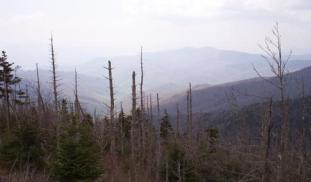Please wait...
About This Project
Previous research suggests that the Southeast U.S. experienced cooling temperatures since the beginning of the twentieth century. However, surface stations throughout the region are overwhelmingly placed in low-elevations less than 1000 meters above sea level. This ongoing research will summarize climate trends from high-elevation stations in the mountainous southern Appalachians, which will improve the accuracy of climate models, helping researchers and policy makers alike.

Browse Other Projects on Experiment
Related Projects
Worms at Work: Scoping Natural Carbon Sequestration at Scale
For centuries, scientists noted earthworms' exploits as ecosystem engineers. Recent research shows the feasibility...
Whales as oceanographers: Developing multi-sensor tags for improved understanding and management of critical habitats
Limited oceanographic data prevent accurate prediction of whale foraging hotspots. To address this, we will...
Communities perception and monitoring of ocean acidification in the Douala-Edea national park (Cameroon)
This project will help us to evaluate the vulnerability of clam fishing to ocean acidification (OA) in the...


